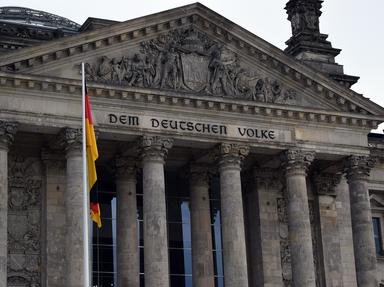
Germany Between the Rise & Fall of The Berlin Wall Quiz
(1961-1989)
Between 1961-89, the Berlin Wall was a symbol of a divided Germany (East & West). Additionally some German cities had to be handed over to other countries as reparations for two world wars. Your mission is to sort ten German cities into three categories.
A classification quiz
by 1nn1.
Estimated time: 3 mins.
- Home
- »
- Quizzes
- »
- History Trivia
- »
- European
- »
- German